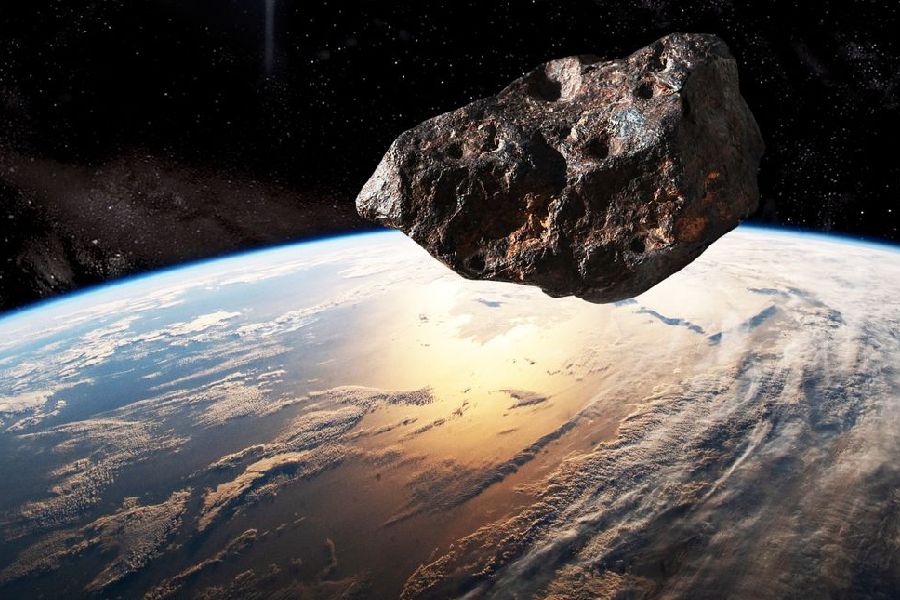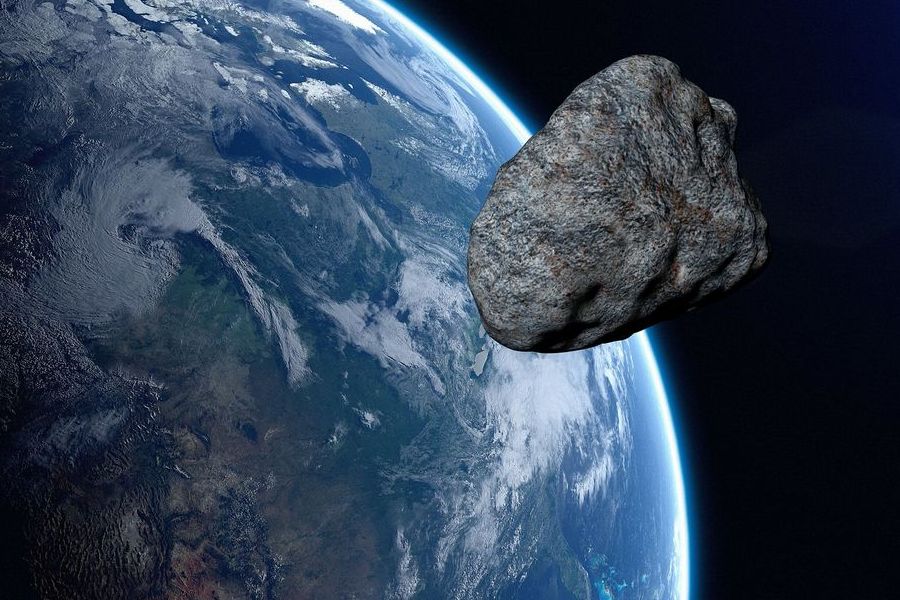Have you ever seen a brilliant flash blazing across the sky at night, sparking curiosity about pieces of space falling to Earth, leaving us wondering whether it is a meteorite, asteroid, or something completely different? So, what is a meteorite, and how can we distinguish a meteorite from other extraterrestrial rocks? Meteorites originate from asteroids and planetary fragments traversing millions of miles before striking land or splash-landing at sea.
Unlike short-lived meteors streaking across the sky, meteorites allow for tangible study of extraterrestrial material. Meteorites are distinct from regular Earth rocks in both composition and origins.
We will explore what gives meteorites their unique properties. Also, we’ll trace back where these space rocks originate before embarking on long journeys through the solar system that eventually bring them to Earth’s surface.

What Is a Meteorite?
A meteorite is a fragment of a meteoroid or asteroid that survives its passage through Earth’s atmosphere and lands on the Earth’s surface. These space rocks can vary in size from tiny particles to large masses weighing several tons.
If it withstands the intense heat and friction of atmospheric entry and reaches the Earth’s surface, it becomes a meteorite. Meteorites provide valuable insights into the composition of the early solar system and are studied by scientists to understand the processes that shaped our celestial neighborhood.
Where do meteorites come from?
Most meteorites originate from asteroids in the asteroid belt between Mars and Jupiter or from comets. But what happens when a meteor hits Earth? When a meteoroid enters Earth’s atmosphere, it is called a meteor or shooting star.
Meteorites come from space and are remnants of asteroids or fragments from comets that survive the journey through Earth’s atmosphere, landing on the planet’s surface. These extraterrestrial rocks provide valuable insights into the early solar system and hold clues about the formation and composition of celestial bodies.
However, how often do meteorites actually hit the Earth? Small meteorites hit the Earth every day; however, they go unnoticed as they burn up very fast. Larger meteorites, the size of a car, hit the Earth once a year, and the larger ones may predictably hit the Earth every 2,000 years.
Meteoroids, Meteors, and Meteorites: Understanding the Journey
Meteoroids are rocky or metallic objects moving through space that originate from comets or asteroids. They range in size from mere dust specks up to 10 meters across.
When meteoroids collide with planets or moons at high velocities, they encounter atmospheric friction that heats and often vaporizes the object within seconds. This produces the bright glowing streaks across the night sky many call “shooting stars”, but the right terms would be meteors.
Friction heats meteoroids during descent, making them glow brightly as air molecules are compressed and ionized. If part of the meteoroid survives this passage through the atmosphere, the remaining fragment that strikes Earth is called a meteorite.
Meteorite criteria and significance
Meteorites must meet strict criteria to confirm their extraterrestrial origin. This includes having an embedded fusion crust from melting during atmospheric entry. They also have a composition vastly different from Earth’s minerals and rocks.
Studying meteorites helps reveal information about materials formed during our solar system’s ancient beginnings over 4.6 billion years ago.
Origins of Meteorites: Asteroids and Comets
Asteroidal origin
Most meteorites derive from asteroid parent bodies, as evidenced by chemical trace matching known elements in the asteroid belt between Mars and Jupiter.
Gravitational disturbances often send asteroids veering into crossing orbits with Earth. Collisions result in meteorites containing pristine samples dating back over 4 billion years.
Cometary origin
A smaller portion, less than 5%, of recovered meteorites demonstrate isotopic ratios and clues pointing to origins from comets rather than asteroids. For example, amino acids discovered in rare carbon-rich Ivuna-type meteorites likely formed from aldehyde and ammonia reactions in cometary ice environments.
Solar system insights
No matter if it is derived from rocky asteroids or icy comets, meteorites carry signatures from solar system formation during the coalescence of the stellar nebula.
Models describing planetary accretion depend heavily on studying meteorite contents like stardust, solids, organics, and volatiles locked from ancient interstellar gas cloud collapse.

Classification of Meteorites
Meteorites comprise a diversity of specimens, mainly categorized into three distinct compositional groups: stony, iron, and stony-iron. Over 90% of falls are stony, while just 5% are metallic irons.
Stony meteorites
As the name suggests, stony meteorites largely consist of silicate minerals and rocks, much like Earth’s crust. The two main types are chondrites and achondrites. Chondrites contain round mineral chondrules formed as molten droplets in the early solar system, while achondrites come from differentiated planetesimals.
Common kinds of stony meteorites include:
- Ordinary chondrites – the most abundant type, originating from asteroids. These contain chondrules.
- Carbonaceous chondrites – rare and carbon-rich, with organics and water. They come from the outer asteroid belt.
- Howardites, eucrites, and diogenites (HEDs) – achondrites likely ejected from Proto-planet Vesta.
Stony meteorites often fracture on the impact such that small fragments later turn up collectively as meteorite showers covering large strewn fields.
Iron meteorites
Distinguished by their rust-tinted, pitted exteriors, iron meteorites consist primarily of nickel-iron mixed with rare minerals like troilite and schreibersite. Their metallic composition points to violent origins in the cores of shattered asteroids heated from radioactivity, which produced magnetic dynamos early on.
The Widmanstätten pattern revealed when iron meteorites are etched with acid unveils their unique crystallization process during gradual cooling over millions of years in asteroids at least 125 miles wide, enabling minerals to emerge.
Stony-iron meteorites
These unique part-rock, part-metal meteorites offer up some eye-catching specimens! The two main types are pallasites and mesosiderites. Let’s take a closer look.
Dazzling pallasites
Pallasites really dazzle with gem-quality olivine crystals immersed in an iron-nickel matrix. They probably formed deep down near the core-mantle boundary on an asteroid’s parent body. Famous samples like Fukang and Esquel flaunt the largest and prettiest peridot-hued crystals packed into any space rocks found so far!
Mishmashed mesosiderites
Mesosiderites have a real mishmash look, cramming metal and basaltic rock shards together in one mass, almost like an asteroid layer cake! Scientists think mesosiderites come from a protoplanet that broke apart.
The Vaca Muerta mesosiderite even shows signs of intense heating from ancient collisions exceeding 2,700°F – talk about cosmic carnage!
Unique crystallization process
In both meteorite types, the metallic nickel-iron cement binds the stony materials. Exceptionally gradual cooling instigated separation while allowing crystal lattices and mineral veins to emerge—all responsible for the intriguing features that make stony-iron meteorites so distinct.
Impact on Earth and Beyond
Impact craters
When larger meteorites smash into Earth, they carve out impact craters while launching molten plumes of rocky debris across landscapes. High-pressure shock metamorphism alters local mineralogy, as seen in unique impact ejecta material recovered inside larger craters.
Though erosion, burial, and plate tectonics are obscure most of the time, 190 confirmed impact structures exist, including Arizona’s kilometer-wide Meteor Crater.
Meteorites on other planets
Recurving impact craters across Mars and the Moon similarly trace rampant meteorite collisions. Mars rovers and lunar missions have imaged and analyzed iron and stony meteorites on these neighboring surfaces.
This has confirmed past Tunguska-scale airbursts from meteoroid impacts that occurred across the inner solar system. Unlike Earth’s obscuring atmosphere and ecosystems, surface weathering proceeds slowly atop desert-dry regolith plains, preserving fallen meteorites still within reach.
Conclusion
In summary, what is a meteorite? We hope this guide has enhanced our understanding of a meteorite – an extraterrestrial fragment that survives passage through Earth’s atmosphere.
By tracing meteorite origins, classifying distinct types, and outlining identification techniques, this article spotlighted how meteorites opened tangible portals for analyzing our early solar system.
Beyond inspiring imagination like shooting stars, meteorites anchor scientific models explaining planetary evolution. As noted astrophysicist Neil deGrasse Tyson emphasized, “Meteorites connect us, literally, to the events and processes that forged Earth and the other objects in the solar system.”
